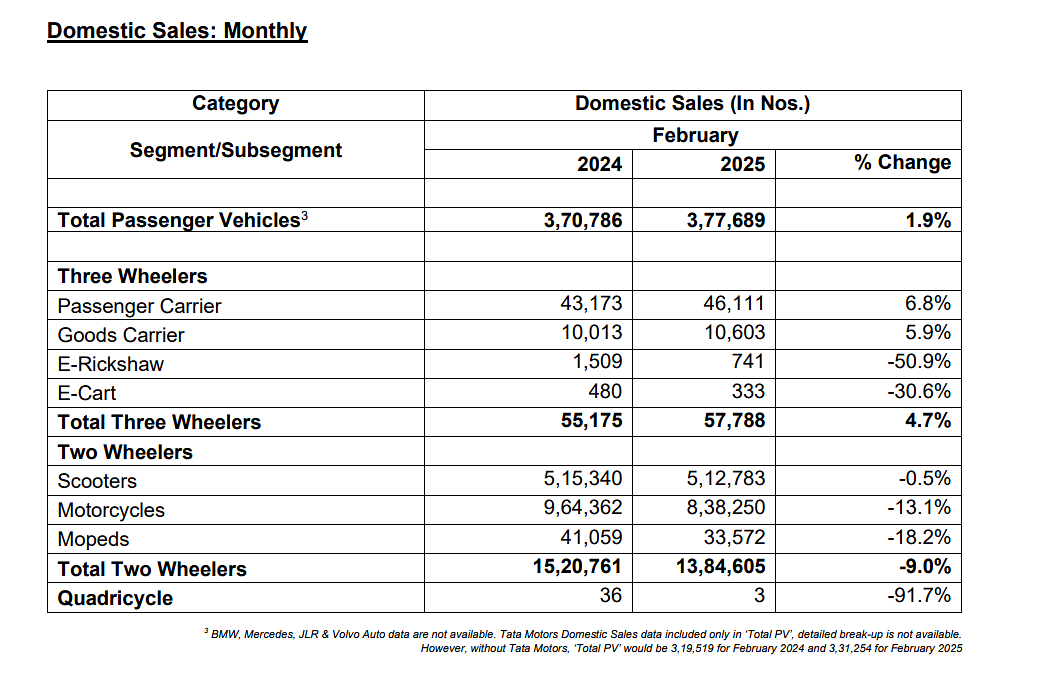The Indian automobile industry showed mixed performance in February 2025, with passenger vehicles hitting record February sales while two-wheelers witnessed a significant decline, according to data released by the Society of Indian Automobile Manufacturers (SIAM) today.
Total production of passenger vehicles, three-wheelers, two-wheelers, and quadricycles reached 23,46,258 units in February 2025. Passenger vehicle sales grew by 1.9% compared to February 2024, reaching 3,77,689 units, marking the highest February sales ever for this segment.
Three-wheeler sales also showed positive movement, increasing by 4.7% to 57,788 units compared to the same month last year. Within this category, passenger carriers and goods carriers grew by 6.8% and 5.9% respectively, though electric rickshaws and carts witnessed sharp declines of 50.9% and 30.6%.
The two-wheeler segment, which forms the bulk of India’s automobile market, experienced a 9% decline year-on-year, with sales dropping to 13,84,605 units. Motorcycles were the worst hit with a 13.1% drop, while scooters remained relatively stable with just a 0.5% decrease. Mopeds continued their downward trend with an 18.2% decline.
“Passenger Vehicles segment remained resilient and posted its highest ever sales of February in 2025,” said Rajesh Menon, Director General of SIAM. He expressed optimism about the industry’s near-term prospects, noting that “upcoming festivities of Holi and Ugadi in March is likely to continue to drive demand, thereby closing FY 2024-25 on a reasonably positive note.”
The mixed performance reflects shifting consumer preferences and economic conditions in India’s automotive market. While the passenger vehicle segment continues to show resilience despite inflationary pressures, the significant drop in two-wheeler sales indicates possible economic stress among middle and lower-income consumers who typically purchase these vehicles.
Industry analysts attribute the growth in the passenger vehicle segment to new model launches and the increasing preference for personal mobility post-pandemic. The decline in electric rickshaws, despite the government’s push for electrification, suggests challenges in the electric vehicle adoption curve at the mass market level.
The data excludes figures from luxury carmakers BMW, Mercedes, JLR, and Volvo Auto, which means the actual market performance could be somewhat different when considering the complete picture.

